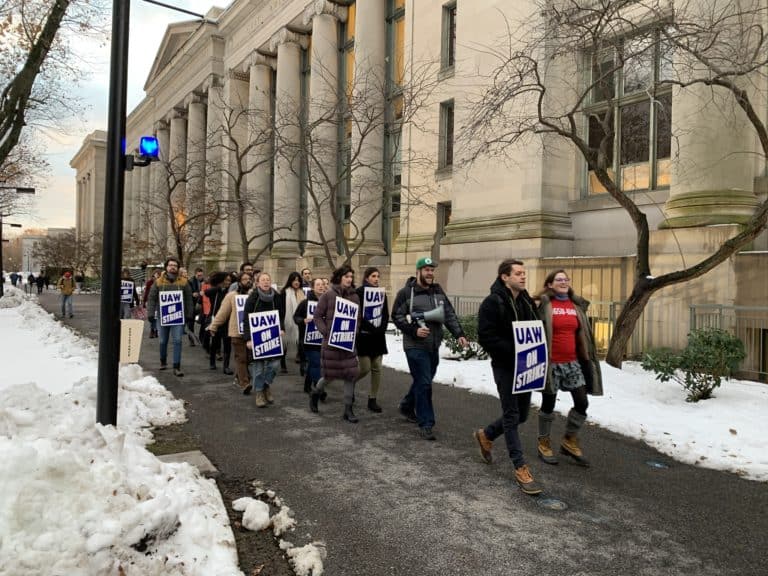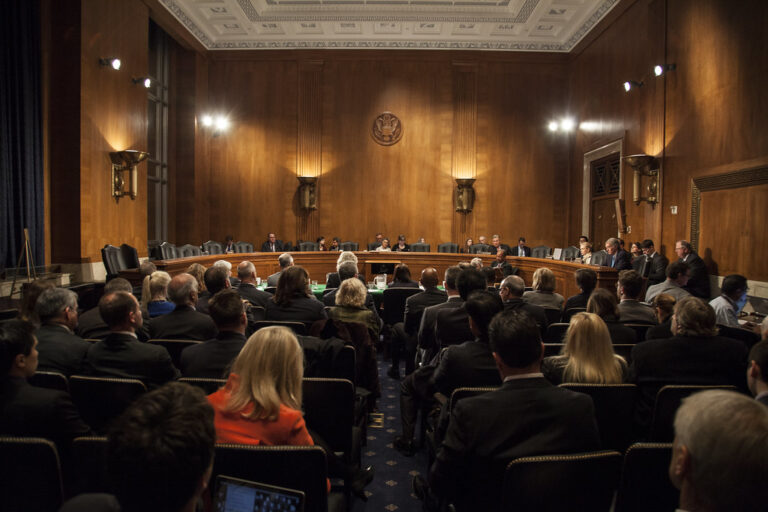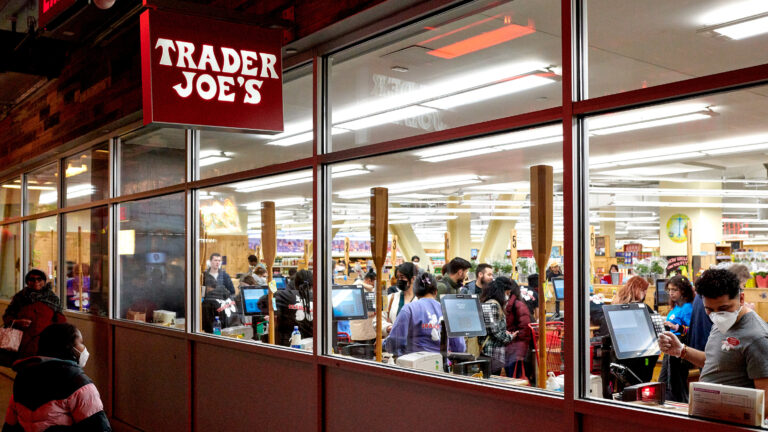Bernie or Hillary…or Trump? Per the New York Times, union leaders have “acknowledged that Mr. Trump holds appeal . . . for some of [their] members” due to his “unapologetically populist positions on certain economic issues, particularly trade; a frustration with the impotence of conventional politicians; and above all, a sense that he rejects the norms of Washington discourse.” Trump has a mixed record when it comes to employing union workers: although “[h]e has put his fair share into hiring union people” (according to one union president), his Trump International Hotel Las Vegas is also subject to an ongoing labor dispute. Nevertheless, union officials “fear that Mr. Trump, if not effectively countered, may draw an unusually large number of union voters in a possible general election matchup,” especially “in swing states like Ohio, Pennsylvania, Michigan and Wisconsin.”
Although union membership has remained steady nationwide, the same cannot be said for Wisconsin. The Cap Times notes that Thursday’s Bureau of Labor Statistics report showed that union membership in the Badger State dropped from 11.7% in 2014 to 8.3% in 2015 (the nationwide figure for 2015 was 11.1%). That should come as no surprise, given Governor Scott Walker‘s assault on organized labor. Yet union coverage is not the only area in which Wisconsin lags behind other states: “Wisconsin’s economic recovery [also] continues to trail the rest of the country.” The Times observes that while “[u]nions may not be the be-all and end-all, . . . they’ve historically strengthened the country’s middle class, winning wage hikes and benefits for workers so they could support their families and share in the nation’s wealth, and making sure employers provided safe and healthy workplaces.” Unions also “provided the benchmarks that nonunion employers used to keep their workers happy so they wouldn’t be tempted to form unions themselves.” Thus, it’s no coincidence that “the biggest gains in the middle class occurred during the heyday of unions,” or that “the middle class has suffered in recent years as union membership has eroded.”
Quartz and the New York Times are shining a spotlight on working women in India. Quartz examines a recent report on the Indian garment industry by the India Committee of the Netherlands, which found that “some . . . factories kept women (the majority of garment workers) in hostels monitored by male security guards and severely restricted their movements.” The report also found that conditions inside the hostels leave much to be desired: “Nothing is good,” said one worker. “But we are staying here because we have to live and there is no other way.” Some women, on the other hand, are fighting not for better working conditions, but for the right to work itself. The Times tells the stories of a number of Indian women who are being barred from the workplace. Indeed, female participation in the Indian workforce lags far behind other G-20 countries, and has in fact declined in recent years. Economists attribute the phenomenon to two factors: First, “India’s [economic] boom has created jobs in segments that are generally not accessible to women, like construction.” The second factor “has to do with culture: Unless their choices are dictated by destitute poverty, Indian families seek the status that comes from keeping women at home.” The Times also published a separate article on its reporting of the story.
Farm workers in California are calling for better wages and improved working conditions, reports NPR. Taking their lead from other low-wage worker movements that have experienced recent success — especially the Fight for $15 movement championed by restaurant employees — workers in Ventura and Santa Barbara counties are backing a “Bill of Rights . . . to establish a ‘rule of law’ in the fields.” One advocate contends that the “rampant violations of farm workers rights” stem from “a lot of employers feel[ing] like it’s not likely they’re going to get caught [breaking laws], and that if they get caught the cost is not that much — so they might as well take the risk.” This is especially true where undocumented workers are involved — and such workers comprise an estimated 40% to 50% of the farm industry. Female farmworkers are also particularly vulnerable: a recent letter to the New York Times highlights the alarming “prevalence of sexual violence in agriculture.”






Daily News & Commentary
Start your day with our roundup of the latest labor developments. See all
November 21
The “Big Three” record labels make a deal with an AI music streaming startup; 30 stores join the now week-old Starbucks Workers United strike; and the Mine Safety and Health Administration draws scrutiny over a recent worker death.
November 20
Law professors file brief in Slaughter; New York appeals court hears arguments about blog post firing; Senate committee delays consideration of NLRB nominee.
November 19
A federal judge blocks the Trump administration’s efforts to cancel the collective bargaining rights of workers at the U.S. Agency for Global Media; Representative Jared Golden secures 218 signatures for a bill that would repeal a Trump administration executive order stripping federal workers of their collective bargaining rights; and Dallas residents sue the City of Dallas in hopes of declaring hundreds of ordinances that ban bias against LGBTQ+ individuals void.
November 18
A federal judge pressed DOJ lawyers to define “illegal” DEI programs; Peco Foods prevails in ERISA challenge over 401(k) forfeitures; D.C. court restores collective bargaining rights for Voice of America workers; Rep. Jared Golden secures House vote on restoring federal workers' union rights.
November 17
Justices receive petition to resolve FLSA circuit split, vaccine religious discrimination plaintiffs lose ground, and NJ sues Amazon over misclassification.
November 16
Boeing workers in St. Louis end a 102-day strike, unionized Starbucks baristas launch a new strike, and Illinois seeks to expand protections for immigrant workers